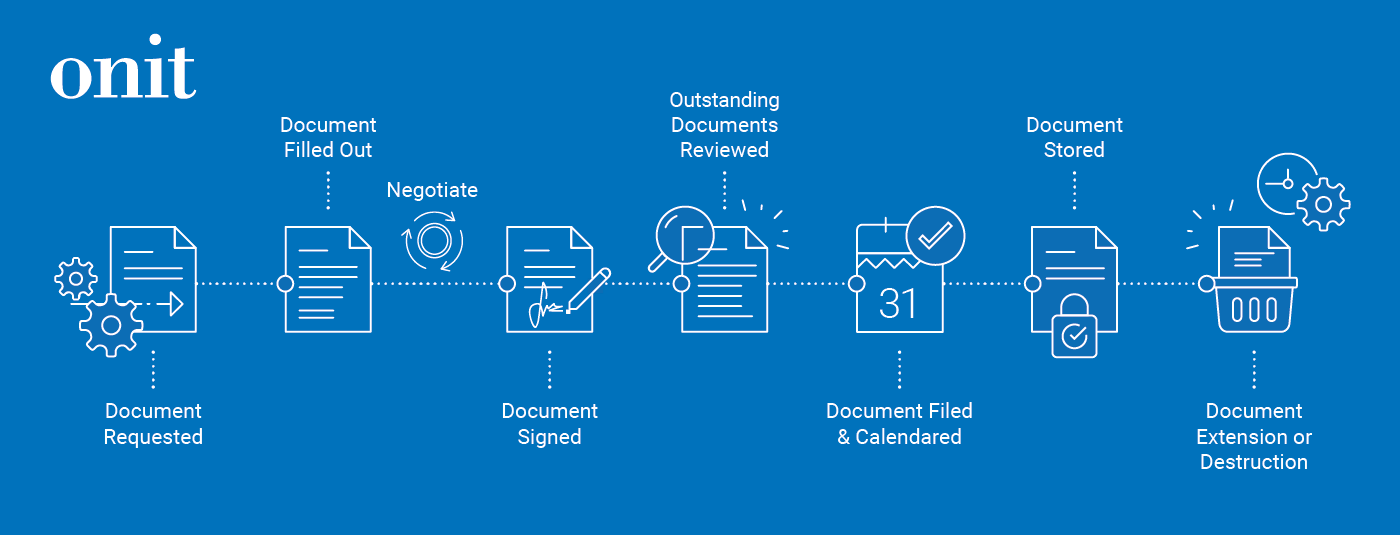
Legal AI technology, along with other forms of AI, was once the stuff of science fiction. However, artificial intelligence (AI) has entrenched itself in the mainstream. While there are plenty of myths and misconceptions floating around about what AI is and what it can do, one thing is clear: AI gets results.
That’s why more and more corporate legal departments and legal ops professionals are turning to AI-powered solutions to boost efficiency, cut costs and more. As the year goes on, one of the top legal operations trends we expect to see is companies capitalizing on the practical, real-world results that AI can provide.
The Prevalence of Legal AI Technology
We’ve come a long way from the early days of AI, which were largely dominated by chess games and robot movies. Today, AI is present in nearly every aspect of business, with legal AI technology serving as an integral part of how modern legal ops teams function along with the benefits of a contract management system.
There’s no question that general AI adoption among companies of all sizes is on the rise. McKinsey’s State of AI in 2021 Report found that 56% of survey participants across multiple industries adopted AI in 2021, up 50% the previous year. This adoption significantly impacted companies’ bottom lines, with 27% of respondents saying they could trace at least 5% of earnings before interest and taxes (EBIT) to AI.
Corporate legal departments are part of this upward trend. According to CLOC State of the Industry Reports, in-house AI usage increased from 12% in 2019 to 22% in 2021. Not surprisingly, the AI legal software market is predicted to grow by more than 28% between 2021 and 2026.
AI Results in Action
AI is a technology that learns, reasons and acts for itself. It can make decisions that usually require a human level of expertise, meaning it can help lawyers and legal ops professionals anticipate problems and address issues as, or even before, they arise.
AI is ideal for data-intensive tasks because it identifies patterns, learns from them, and generates insights faster and more accurately than humans. Legal work is increasingly made up of data-driven tasks, meaning more legal ops professionals should be turning to AI. A perfect example is contract management.
A study showed that legal contract review software makes new users immediately 51.5% more productive and roughly 33% more efficient by conducting first-pass contract review, making redlines and delivering a contract risk profile, all in a matter of minutes. If you take a typical midsize company with 55 lawyers who collectively review an average of 9,526 contracts each year, a 51.5% productivity increase allows the same legal team to process 4,906 additional contracts each year – the equivalent of adding 28 lawyers to the team.
The benefits of AI based contract management don’t end when the deal is signed. Your contracts contain mountains of valuable data that can help you better run your business and increase efficiency. The only problem is that you historically needed someone to review all those contracts to get at that valuable data, and few legal departments had the time or staff to do the job correctly.
Legal AI technology, though, can review thousands of contracts at once and export data in five seconds or less. When you apply that power to time-intensive, voluminous tasks like repapering, batch review, legacy contract migration and more, AI can save in-house counsel and legal ops professionals a significant number of hours. And that time savings can be reinvested into tasks that create value for the company. In fact, it’s been shown that properly managing contracts from start to finish can increase revenues by up to 9.2%.
A World of Possibilities for Legal AI Technology
Contracting is just one area where in-house lawyers and legal ops professionals are seeing real-world results by implementing AI. As innovation continues to disrupt the legal tech world, AI is being introduced into nearly every aspect of practice and business. But now, AI has evolved beyond a buzzword to provide meaningful – and impactful – results.
To read more about how legal AI technology impacts legal departments and other top trends shaping legal ops today, download our white paper Six Leading Corporate Legal Operations Trends for 2022.











